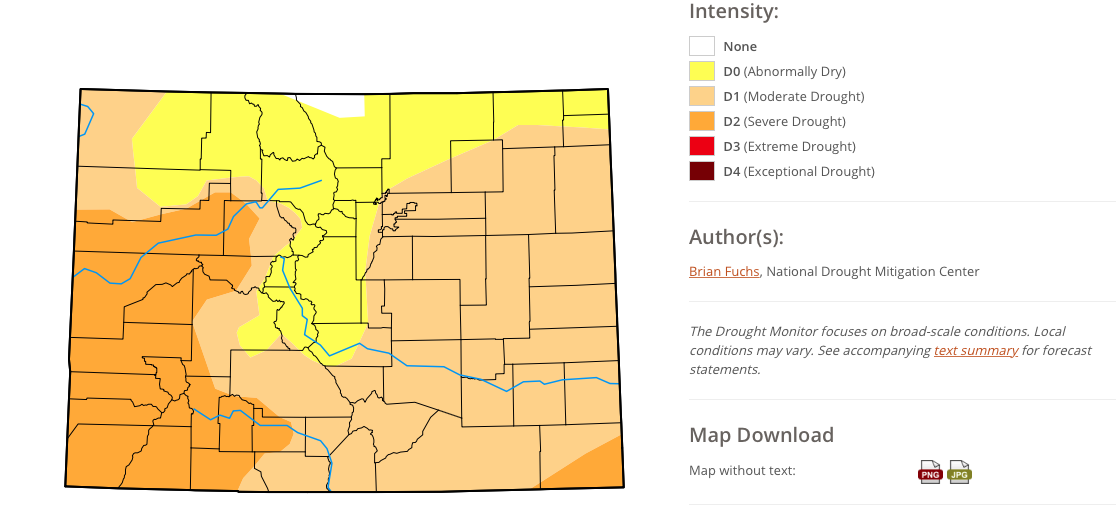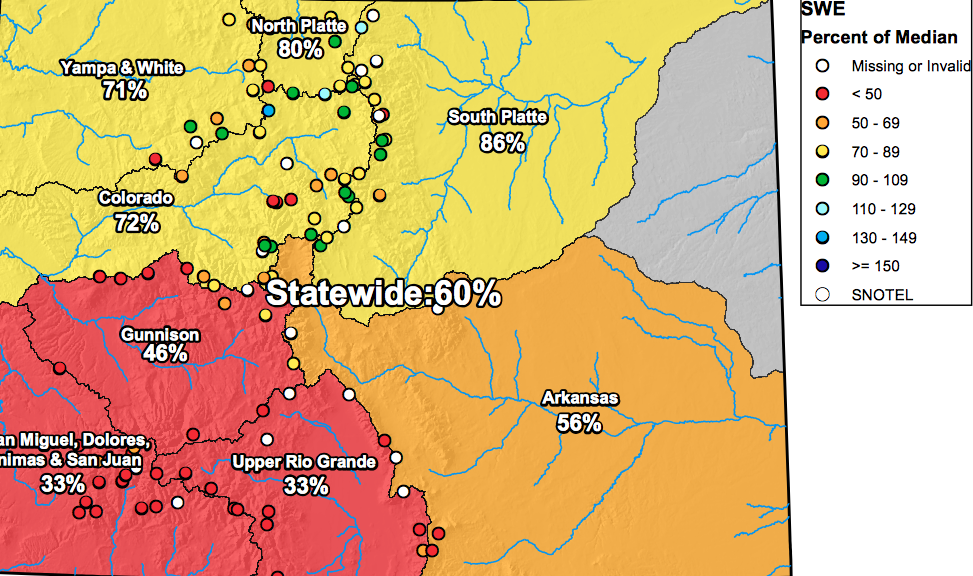
Climate Prediction Center

Audio By Carbonatix
For the first time in a year, Denver is officially in a drought, according to the United States Drought Monitor (pictured below). Yes, snow is falling now, and water will continue to come out of your taps; and, no, a slew of wildfires isn’t about to clog up our blue skies with smoke.
But the drought status does signify the potential for some major issues if we don’t get needed moisture in the next few months, particularly heading into the drier summer and fall months and fire season.
The mountains are struggling, as any powder-day chaser knows. Colorado’s snowpack is a key source of drinking water, and it also helps deters wildfires come spring and summer.
Statewide, as of Friday, the state’s snowpack sat at 60 percent of average, with the biggest deficits in the southern part of the state. The San Juans have been hit particularly hard, with the southwest mountains sitting at only about a third of their typical season-to-date snowfall. The northern mountains are also below average, though recent storms have helped them get back to a solid flurry or two away from typical levels for this time of year.

Climate Prediction Center
The Climate Prediction Center’s official three-month outlook leaves most of Colorado looking drier than average and continuing the persistently dry pattern across the state, particularly in the south.
There’s probably a key buzzword you’re hearing nonstop as to why it’s been so dry and snow-less: La Niña. Okay, that’s technically two words, but it’s a reference to cooler-than-average Pacific Ocean temperatures and a domino effect of global weather impacts.
The West Coast has experienced a fairly typical weather pattern for a La Niña winter: a wet, active spell for the Pacific Northwest and a bone-dry pattern for California and the inter-mountain West. However, storms have trended to push farther north than usual, even for a La Niña winter, leading to the huge snowfall deficits. It’s kept Colorado’s northern mountains close to seasonable levels, but it’s left the southern Colorado mountains hungry for snow.

Climate Prediction Center
However, there’s plenty of time for Mother Nature to get her act together. With three of our four snowiest months of the year on average coming up, big snow (and rain) could be just around the corner. In Denver, our spring snow tends to be hit-or-miss, often coming in the form of blockbuster snowstorms like the one in March 2016 — or, like last March, nothing.
Beyond that, our three wettest months of the year on average are May, June and July (July is the wettest). If the stormy season produces big rain — of course, with some potential side effects — then the drought will slowly go away.
A solid four to eight inches of snow due to come today and an overall more progressive weather pattern — one that allows big pushes of moisture to move through our region — in the forecast for the next few weeks should bring better-than-average moisture chances to the Front Range.
So it’s not time to sound the alarm, at least not yet. But the next few months will be critical as to whether what we’re experiencing is a relatively minor dry spell or something potentially worse.